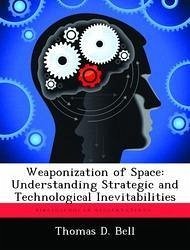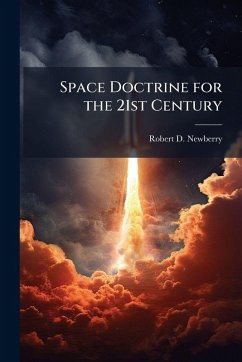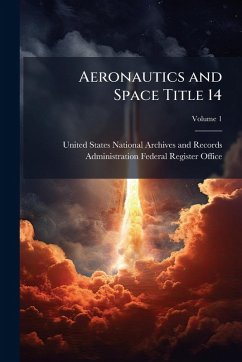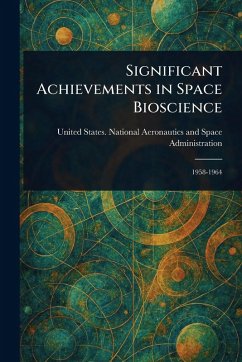
Weaponization of Space
Understanding Strategic and Technological Inevitabilities
Versandkostenfrei!
Versandfertig in über 4 Wochen
14,99 €
inkl. MwSt.
Weitere Ausgaben:

PAYBACK Punkte
7 °P sammeln!
It is inevitable that mankind will weaponize space and equally likely that this will take place in the next thirty years. The United States is in the early stages of a transition from using space assets to support combat operations on the surface of the earth to using space assets to conduct combat operations in space, from space, and through space. This paper discusses factors driving the United States to take its first steps to weaponize space. It is time for the Air Force to build the doctrinal framework for combat operations in, from, and through space that will guide the technological dev...
It is inevitable that mankind will weaponize space and equally likely that this will take place in the next thirty years. The United States is in the early stages of a transition from using space assets to support combat operations on the surface of the earth to using space assets to conduct combat operations in space, from space, and through space. This paper discusses factors driving the United States to take its first steps to weaponize space. It is time for the Air Force to build the doctrinal framework for combat operations in, from, and through space that will guide the technological development of space assets just as the doctrine of strategic bombardment guided Air Force thought and aircraft development prior to World War II. This paper discusses the transition from an air to a space force by examining required changes to Air Force doctrine in terms of the framework of its six core competencies in order to prepare the Air Force to organize, train, and equip aerospace forces for conducting combat operations in space. This work has been selected by scholars as being culturally important, and is part of the knowledge base of civilization as we know it. This work was reproduced from the original artifact, and remains as true to the original work as possible. Therefore, you will see the original copyright references, library stamps (as most of these works have been housed in our most important libraries around the world), and other notations in the work. This work is in the public domain in the United States of America, and possibly other nations. Within the United States, you may freely copy and distribute this work, as no entity (individual or corporate) has a copyright on the body of the work. As a reproduction of a historical artifact, this work may contain missing or blurred pages, poor pictures, errant marks, etc. Scholars believe, and we concur, that this work is important enough to be preserved, reproduced, and made generally available to the public. We appreciate your support of the preservation process, and thank you for being an important part of keeping this knowledge alive and relevant.












